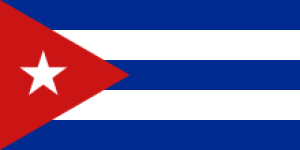Okinawa: A Bastion For Peace?
No Comments yet
Taiwan – Map: commons.wikimedia,org
Recently, in Taiwan, the government unveiled its first home-built submarine. In Japan, the government will upgrade civilian airports and seaports to dual military use in preparation for conflict in Taiwan. The U.S. and allies maneuver to contain China, Russia, and North Korea, while the latter band together against the former’s economic sanctions and military threats. Both blocs test the strength and resilience of the region’s stability. And while North Korea has been the regional bogeyman for decades, if war breaks out, it will likely be in Taiwan.
While China has called for an “indivisible security” where security is dependent upon the security of all, U.S. discourse has centered around the containment of China and deterring war… by preparing for it. If a rapid and massive escalation in U.S. military capability and alliances is proposed to make an invasion of Taiwan costly and unsuccessful (i.e., “the porcupine strategy”), what would prevent China, which has declared its desire for peaceful unification with Taiwan but hasn’t ruled out the use of force, from invading before the U.S. achieves its deterrence fait accompli? While both powers will maneuver just below the thresholds of war, what would prevent a miscalculation from igniting it in the region?
Unable to imagine a world beyond the U.S.-centered one, the anglophone media has little discussion on the peaceful transition towards the multipolar world emerging from the growing wreckage of the U.S.-unipolar one. Thus, shifting the discourse towards peace requires actors from the Global North to raise their voices against war and confrontation and call for peace and coexistence.
The first such voices will emerge from the geopolitical fault lines by those conscious of the destruction of war. Among these, a key actor will be the Okinawan people, whose perilous location in the “keystone of the Pacific” and whose history as a sacrificial lamb shapes their consciousness and positions them to help lead peace movements in the region.
“Keystone of the Pacific”
During the U.S. military rule (lasting until 1972, 20 years after Japan regained its “sovereignty”), U.S. military license plates in Okinawa carried the slogan “Keystone of the Pacific,” referring to Okinawa’s strategic importance to the Korean and Vietnam wars. Today, Okinawa is a keystone in the United States’ Taiwan strategy. Military bases such as Kadena Air Base (housing “the [U.S.] Air Force’s largest combat air wing”) serve as unsinkable aircraft carriers.
As much as Okinawa is a strategic point for the U.S. strategy against China, it also invites Chinese counterattack. Beyond geopolitical reality, Okinawans’ fear of becoming sacrificial lambs is ingrained in their historical consciousness. As Hideki Yoshikawa, director of the Okinawa Environmental Justice Project, notes, those who lived through World War II’s Battle of Okinawa learned that “soldiers, especially the Japanese soldiers, don’t protect you.” In fact, “having military bases… means attracting military attack.” Unsurprisingly, a 2022 study revealed that 83 percent of Okinawans believed that Okinawa’s bases would be targeted during a conflict.
Sacrificial Lamb
Fought in the final days of World War II, the Battle of Okinawa was the bloodiest Pacific battle and the only one fought on Japanese land. According to Satoko Oka Norimatsu, director of the Peace Philosophy Centre in Vancouver, Canada, more than 120,000 Okinawans (one-quarter to one-third of the population) were sacrificed to slow the U.S. military advance into mainland Japan. Middle and high school boys and girls were mobilized as soldiers and nurses. Given Japan’s forced annexation and cultural assimilation of Okinawa’s independent Ryukyu kingdom in 1879, Norimatsu bluntly notes that the Japanese Imperial Army sacrificed “its southern colony to protect the main Emperor’s land.”
It was sacrificed again after the war. The 1951 Treaty of San Francisco with the U.S. returned “sovereignty” to Japan, but handed Okinawa to the U.S. military, which had never left. For another 20 years, Okinawans lived under U.S. law, requiring passports to go to Japan and suffering the indignities and dangers of foreign military occupation: in 1955, a six-year-old girl was raped and murdered, followed by another rape a week later. In 1972, Japan re-acquired Okinawa, promising U.S. military bases would be reduced to a level proportional to that of the mainland. Instead of a reduction, the proportion increased. While “lower defense spending because of the U.S. military presence in Okinawa” enabled Japan’s postwar economic surge, Okinawa remained Japan’s poorest prefecture.
Even under Japanese governance, the heinous crimes of U.S. soldiers persisted: the 1995 abduction and rape of a 12-year-old girl by three U.S. soldiers; the 2016 rape and murder of a 20-year-old woman by a U.S. military contractor; the (at least) eight sexual crimes from 2017 to 2019 revealed to have been investigated and kept secret by the U.S. military.
Okinawans suffer the dangers and indignities of housing—in a dense urban area—Marine Corps Air Station Futenma, referred to as “the most dangerous base in the world” by former U.S. Secretary of Defense Donald Rumsfeld. In 2017, a flying helicopter dropped a window on an elementary school injuring a child. In 2004, a helicopter crashed on the campus of Okinawa International University. Added to all this is the incessant noise of low-flying aircraft over residential areas.
Waging Peace
In a 2019 non-binding referendum, 72 percent of Okinawans opposed the construction of a new base in Henoko-Oura Bay to replace Futenma Base. Yet, according to Yoshikawa, the government-dominated media’s barrage of “propaganda about the China threat, Taiwan contingency, and North Korean threats” has made some more amenable to increasing military presence. In contrast to Okinawa island, some of the prefecture’s southern islands, inexperienced in war or occupation, are more open to stationing Japanese Self-Defense Forces.
Yoshikawa says that peace movements are responding by working to “create a larger, more cohesive peace movement” that is organizing events and rallies to which peace groups from mainland Japan and abroad are invited. The growing US-Japan-South Korea trilateral alliance has “sparked a counter-alliance among peace movements” in each country. If Okinawa is an unsinkable aircraft carrier for the U.S. to wage war, it can also become a bastion for movements to wage peace.
By Dae-Han Song
Author Bio:
This article was produced by Globetrotter.
Dae-Han Song is in charge of the networking team at the International Strategy Center and is a part of the No Cold War collective.
Source: Globetrotter
You May Also Like
Comments
Leave a Reply







